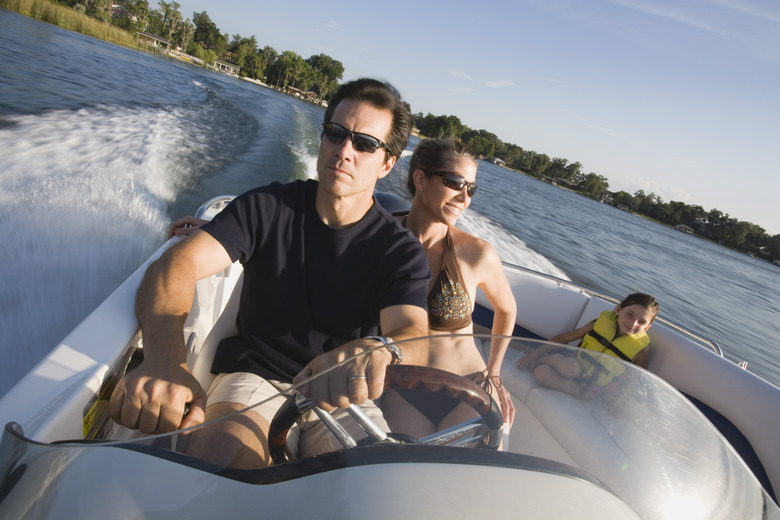Types Of Marine Diesel Engines
Marine diesel engine types are the two-stroke cycle and the four-stroke cycle. Invented by Rudolph Diesel in 1892, a diesel engine operates by igniting fuel inside a cylinder containing a piston. The piston's motion then converts thermal energy into work. The first marine diesel engine was installed in the Selandia, an oceangoing vessel, in 1912. According to the Federation of American Scientists, the diesel engine has emerged as an essential component of the U.S. Navy's propulsion power.
Four-Stroke Cycle Engine
Four-Stroke Cycle Engine
Medium to large merchant boats employ the four-stroke cycle diesel engine to provide middling engine speeds of 250 to 850 rpm. This type of engine is also the preferred method of propulsion on vessels with minimal head room, such as passenger boats and ferries. According to MarineDiesels, the engine requires four piston strokes to convert fuel into work. While the piston moves up and down the cylinder two times, the crankshaft revolves twice. The strokes are commonly known as induction, compression, power and exhaust.
Two-Stroke Cycle Engine
Two-Stroke Cycle Engine
Compared to the four-stroke cycle engine, the larger two-stroke cycle engine has a superior power-to-weight ratio and improved fuel economy. It is the preferred engine of owners of deep-sea ships that require significant power output. Although the two-stroke engine averages an engine speed of about 100 rpm, it can run on heavy fuel oil, which is less expensive than refined fuel. Two-stroke diesel engines of giant dimensions are some of the most powerful engines on the planet, according to MarineDiesels. Although oil lubricates its crankshaft, the two-stroke engine does not mix oil or fuel with air before induction. In this type of engine, the piston moves up and down the cylinder only once and the crankshaft revolves one time.
Three Subcategories
Three Subcategories
According to Martin's Marine Engineering, diesel engines are also categorized by high, medium and slow speed. High-speed engines can achieve 900 rpm and are used for yachts. Found on small ships, medium-speed engines fall within the 300 to 900 rpm range. Slow-speed engines top out at 300 rpm.
Cite This Article
MLA
Tang, Kay. "Types Of Marine Diesel Engines" sciencing.com, https://www.sciencing.com/types-marine-diesel-engines-7241726/. 24 April 2017.
APA
Tang, Kay. (2017, April 24). Types Of Marine Diesel Engines. sciencing.com. Retrieved from https://www.sciencing.com/types-marine-diesel-engines-7241726/
Chicago
Tang, Kay. Types Of Marine Diesel Engines last modified March 24, 2022. https://www.sciencing.com/types-marine-diesel-engines-7241726/
